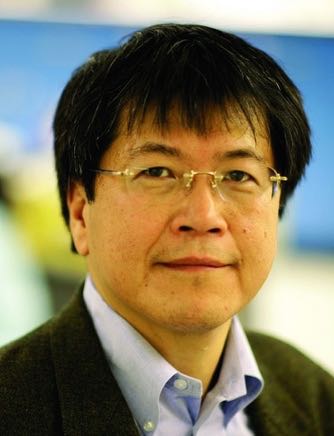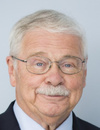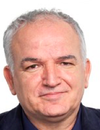Co-Located Conference AgendasLab-on-a-Chip and Microfluidics: Companies, Technologies and Commercialization "Track B" | Lab-on-a-Chip and Microfluidics: Emerging Themes, Technologies and Applications "Track A" | Point-of-Care Diagnostics & Global Health 2018 | Single Cell Analysis Summit 2018 | 

Monday, 1 October 201813:00 | Conference Registration and Materials Pick-Up | |
Session Title: Congress Plenary Session |
| | |
Plenary Session Chairperson: Leanna Levine, Ph.D., Co-Founder & CEO, ALine, Inc. |
| | 14:00 |  | Keynote Presentation Wearable Microfluidic and Microtubular Sensors For Biomedical Applications
Chwee Teck Lim, NUS Society Chair Professor, Department of Biomedical Engineering, Institute for Health Innovation & Technology (iHealthtech), Mechanobiology Institute, National University of Singapore, Singapore
The future of healthcare wearables lies in continual sensing in an
unobtrusive manner. Tactile sensing is especially important to capture
mechanotransduced signals arising from the body, or as a result of
interactions with the external environment. However, conventional
sensors are rigid, stiff and obstrusive. Therefore, one of the key
objectives is to confer flexibility and stretchability to our sensing
elements, while maintaining its sensitivity and robustness. Here, we
develop a novel liquid-based microfluidic and microtubular sensors that
possess high flexibility, durability, and sensitivity. The sensors
comprise a soft elastomer-based microfluidic template encapsulating a
conductive liquid which serves as the active sensing element of the
device. This sensor is capable of distinguishing and quantifying the
various user-applied mechanical forces it is subjected to. We
demonstrated biomedical applications of our sensors in rehabilitation
monitoring, artificial sensing and disease tracking such as that for
diabetic patients. Overall, our work highlights the potential of the
liquid-based microfluidic sensing platform in a wide range of biomedical
applications and further facilitates the exploration and realization of
functional liquid-state device technology. |
| 14:30 |  | Keynote Presentation Wearable Microfluidics For Real-Time Personal Monitoring
Martyn Boutelle, Professor of Biomedical Sensors Engineering, Imperial College London, United Kingdom
Tissue functions at a cellular level by exchange of molecules either between cells and blood or between the cells themselves. This produces patterns of molecular change that are diagnostic of cellular processes whose origin can be physiological (exhaustion, pregnancy) or pathological (ischemia, renal failure, cancer). Our technologies have now developed to a point where we can aspire to do more than this, to measure from patients in real-time. The has the great benefit that it is them possible to understand the evolution of disease, the effectiveness of treatments, and ultimately to guide treatment. In this presentation I will describe the development of microfluidic devices connected to wireless electronics for transplant organ, patient and athlete monitoring. Tissue sampling is via an integrated microfluidic device, a microdialysis probe. Molecular biomarkers are measured using microscale integrated amperometric biosensors and solid-contact ion-selective electrodes (ISE) for tissue ionic balance. For detailed patterns of ionic responses we have developed high density Field Effect Transistor (FET) array which function as ISEs within the flow stream. We have also edevelodp multiphase flow microfluidic systems for highest time resolution.The presentation with describe the design and optimization challenges and include clinical examples from our recent work. |
| 15:00 |  | Keynote Presentation Advancing the Performance of Low Cost Diagnostics For Global Health
Bernhard Weigl, Director, Center for In-Vitro Diagnostics, Intellectual Ventures/Global Good-Bill Gates Venture Fund, United States of America
We will present lab and field results with recently developed lateral flow and similar assays for global health. Our group’s mission is to develop assays for use in global health applications that are as sensitive as the best conventional diagnostic assays (in some cases even better) while retaining cost, simplicity, and usability advantages. For our lateral flow assay work we have developed a 3D modeling platform for paper-based assays and are using it to determine the theoretical limit of a particular assay variant, as well as a rapid array-based empirical optimization system for lateral flow assays. Together, these approaches allow the development of more sensitive assays with shortened development time. We will describe the assay optimization methods we employ, as well the use of these methods in the development of several assays under development, including ones for malaria, and TB. |
| 15:30 |  | Keynote Presentation Absolute Quantification of Molecular Biomarkers
Hsueh-Chia Chang, Bayer Professor of Chemical and Biomolecular Engineering, University of Notre Dame, Interim Chief Technology Officer, Aopia Biosciences, United States of America
We report several micro/nanofluidic technologies we invented that can
overcome the sensitivity obstacles for liquid biopsy: (1) A chip
electrophoresis module for high-yield exosome extraction without
centrifugation; (2) A Surface Acoustic Wave exosome lysing module that
replaces chemical lysing and eliminates the need for low-yield
solid/liquid miRNA extraction; (3) A solid-state polymer nanopore fM
assay that can delay translocation of short 20-nt miRNAs and
differentiate the duplexes that have hybridized with inserted oligos and
the wild-type miRNAs; (4) A Carbon-Nanotube Protein Sensor with fM
sensitivity, three orders of magnitude below KD. Integrated into a
biochip, these technologies allow us to quantify protein biomarkers for
breast cancer and miRNAs for pancreatic cancer, from patient blood
samples, at sensitivities far better than CTC and current molecular
biomarker assays, with dramatically improved AUC and p values. We have
eliminated low-yield extraction steps and employed irreversible kinetics
to achieve such high performances and have allowed absolute
quantification without the need for house-keeping reference molecules. |
| 16:00 | Coffee Break and Networking | 16:30 |  | Keynote Presentation Nanosensors for Single-molecule Sequencing
Steve Soper, Foundation Distinguished Professor, Director, Center of BioModular Multi-Scale System for Precision Medicine, The University of Kansas, United States of America
We are generating a single-molecule DNA sequencing platform that can
acquire sequencing information with high accuracy. The technology
employs arrays of nanosensors that read the identity of individual
mononucleotides from their characteristic electrophoretic mobility and
current transient amplitudes through a 2-dimensional (2D) nanochannel
(~20 nm in width and depth; <10 µm in length) fabricated in a
thermoplastic via nano-imprinting (NIL). The mononucleotides are
generated from an intact DNA fragment using a highly processive
exonuclease, which is covalently anchored to a plastic solid support
contained within a bioreactor that sequentially feeds mononucleotides
into the 2D nanochannel. We will discuss the operation of this
nanosensor in this presentation as well as its production. |
| 17:00 |  | Keynote Presentation Quantum Diagnostics: From Single Cells to Single Molecules
Dino Di Carlo, Armond and Elena Hairapetian Chair in Engineering and Medicine, Professor and Vice Chair of Bioengineering, University of California-Los Angeles, United States of America
The ultimate limits of sensitivity in measuring biological systems
occurs at the level of single-cells and single-molecules. I will discuss
our approaches leveraging microfluidic and microfabrication
technologies to interface at the scale of these single entities. In
particular, we make use of the ability to compartmentalize fluid volumes
to a sub-nanoliter scale and manipulate cells using unique microscale
physics. I will discuss progress in using these quantized or digital
measurements towards single-molecule infectious disease diagnostics,
characterizing the immune evasion state of circulating tumor cells, and
screening for drugs that modulate the contractile forces that single
muscle cells apply. |
| 17:30 |  | Keynote Presentation Integrated Isolation, Detection and Analysis of cf-DNA and Exosome Biomarkers from Cancer Patient Blood Samples - The Road to POC Liquid Biopsy Diagnostics
Michael Heller, Professor, Dept Bioengineering, University of California-San Diego, United States of America
New AC electrokinetic (ACE) microarray/chip device allows 15-20-minute isolation of cancer related cf-DNA, exosomal RNA and protein biomarkers directly from 20-50ul of patient blood, plasma or serum. Cf-DNA levels can be immediately determined directly on the chip (in-situ) using DNA specific dyes and then immunofluorescent analysis can be carried out to identify exosomal protein biomarkers. Presently, cf-DNA and exosomal RNA are then eluted from the ACE chip, and PCR and sequencing analysis carried out to identify the cancer-related point mutations. New procedures are now being developed to carry out on-chip PCR for DNA/RNA analysis. On-chip integration of proteomic and genomic analysis is a major step forward in the quest for seamless sample to answer POC liquid biopsy diagnostics. |
| 18:00 |  | Keynote Presentation Cost-effective and Globally Deployable Mobile Diagnostics Using Paper-Based Nanobiosensors
Arben Merkoçi, ICREA Professor and Director of the Nanobioelectronics & Biosensors Group, Institut Català de Nanociencia i Nanotecnologia (ICN2), Barcelona Institute of Science and Technology (BIST), Spain
Point of care devices are progressing rapidly and the demand for cost efficient globally deployable mobile diagnostics platforms is the key factor for their success. Physical, chemical and mechanical properties of cellulose in both micro and nanofiber-based networks combined with their abundance in nature or easy to prepare and control procedures are making these materials of great interest while looking for cost-efficient and green alternatives for device production technologies. Both paper and nanopaper-based biosensors are emerging as a new class of devices with the objective to fulfil the “World Health Organization” requisites to be ASSURED: affordable, sensitive, specific, user-friendly, rapid and robust, equipment free and deliverable to end-users. How to design simple paper-based biosensor architectures? How to tune their analytical performance upon demand? How one can ‘marriage’ nanomaterials such as metallic nanoparticles, quantum dots and even graphene with paper and what is the benefit? How we can make these devices more robust, sensitive and with multiplexing capabilities? Can we bring these low cost and efficient devices to places with low resources, extreme conditions or even at our homes? Which are the perspectives to link these simple platforms and detection technologies with mobile phone communication? I will try to give responses to these questions through various interesting applications related to protein, DNA and even contaminants detection all of extreme importance for diagnostics, environment control, safety and security. |
| 18:30 | Networking Reception in the Exhibit Hall with Beer, Wine and Dinner. Meet the Exhibitors and Network with Your Colleagues | 20:00 | Close of Day 1 of the Conference. |
Tuesday, 2 October 201809:00 | Tuesday, 2 October 2018 -- Full Day in Concurrent Lab-on-a-Chip and Microfluidics "Track A" and "Track B" | |
Perspectives on Developing a POC Diagnostic For Global Health | | Session Chair: Amy Adelberger, Founder and CEO, Global Impact Advisors, United States of America |
| | 17:00 | Perspectives on Developing a POC Diagnostic For Global Health
Amy Adelberger, Founder and CEO, Global Impact Advisors, United States of America
The aim of the panel is to discuss the challenges and opportunities in developing POC Dx for global health applications. This will be a panel discussion. Our panelists will share their perspectives on what it takes to succeed or fail developing POC diagnostics for global health applications as well as insights about funding global health POC diagnostics.
| 17:15 | Do We Need a GAVI For Diagnostics in the Developing World?
Jim Gallarda, Senior Program Officer, Bill & Melinda Gates Foundation, United States of America
Silos are the chief impediment to progress in global health. Technology innovation is needed, but not sufficient to achieve impact. Adopting an “end-to-end” strategy requires deep knowledge and connectiveness among supply, demand, and facilitating stakeholders. GAVI, The Vaccine Alliance, provides a model that might work for diagnostics. | 17:30 | Point-of-Care Pathogen Diagnostics for the Developed and Developing Worlds
Paul Yager, Professor, Department of Bioengineering, University of Washington and CSO, UbiDX, Inc., United States of America
| 17:45 | Perspectives on Developing a POC Diagnostic for Global Health
Charles Daitch, CEO, Akonni Biosystems Inc., United States of America
The aim of the panel is to discuss the challenges and opportunities in developing POC Dx for global health applications. This will be a panel discussion. Our panelists will share their perspectives on what it takes to succeed or fail developing POC diagnostics for global health applications as well as insights about funding global health POC diagnostics. | 18:00 | Networking Reception in the Exhibit Hall with Beer and Wine. Meet the Exhibitors and Network with Your Colleagues | 19:30 | HP Free Workshop Entitled "Deep Dive -- HP Inkjet Chips for New Research Applications" | 21:00 | Close of Day 2 of the Conference. |
Wednesday, 3 October 201807:30 | Morning Coffee and Breakfast Pastries in the Exhibit Hall | 08:30 | A New Market for POC Technologies: Analytics for Autologous Gene Therapies
Chaminda Salgado, Cell & Gene Therapy Medicinal Process Delivery Leader, GlaxoSmithKline, United Kingdom
This is a completely new and lucrative opportunity for the POC diagnostic sector which can hugely ease the path for commercialisation of their technology, increasing familiarity with the regulatory agencies which would ease the path for approval of their technology for diagnostics purposes. | 09:30 |  Standardizing Processes Instead of Products Standardizing Processes Instead of Products
Fred Mitchell, Engineering Development Manager, Wi, Inc.
Clients frequently ask for a standard blister for their fluidics applications. We have found standardizing on blister and fluidics production processes instead of a one-size fits all approach to products improves delivery time and cost and the fit for the application.
| 10:00 |  Key Insights to Automating Your Assay with a Low Cost Consumable Key Insights to Automating Your Assay with a Low Cost Consumable
Luke Helm, Director of Business Development, Symbient Product Development
How to prepare your assay to be automated will cover:
- Translating from the bench to a cartridge
- Tradeoffs to weigh
- Manufacturing technologies and their advantages/disadvantages, cost per unit considerations, reagent/buffer storage strategies, case studies
| 10:30 | Coffee Break and Networking in the Exhibit Hall | 11:00 |  Learning from Other’s Mistakes: Assay Automation Learning from Other’s Mistakes: Assay Automation
Paul Fleming, Program Director & Director of Site Operations, Ximedica
Transferring a manually performed assay to an automated instrument isn’t as simple as just automating the current protocol. We will discuss some of the pitfalls to avoid, and how you can streamline your product development.
| 11:30 | Molecular Detection of Emerging Pathogens in Low-Resource Settings
Robert Meagher, Principal Member of the Technical Staff, Sandia National Laboratories, United States of America
Emerging infectious diseases often occur in parts of the world that lack even the most basic infrastructure that underlies modern clinical diagnostics. We summarize developments in molecular assays, sample prep, and detection that increasingly allow laboratory-quality diagnostic assays to be performed in low-resource settings, including our own work with smartphone-based detection of viral pathogens. | 12:30 | Networking Lunch in the Exhibit Hall -- Meet the Exhibitors and View Posters | 13:30 |  New Technologies Enabling High-Quality Glass-based Consumable Manufacturing New Technologies Enabling High-Quality Glass-based Consumable Manufacturing
James Downs, Global Business Development Manager, SCHOTT Nexterion
Changing technologies in molecular diagnostics are enabling new substrate solutions in IVD performance. Key among these are laser-enabled structuring and bonding in glass. This presentation will overview these dynamics and expose new opportunities for IVD consumables development.
| 14:00 |  | Keynote Presentation Integrating Aptamer Technology with Paper-Based Point-of-Care Devices for Biomedical Monitoring
John Brennan, Professor and Director, Biointerfaces Institute, McMaster University, Canada
DNA aptamers and DNA enzymes (denoted as functional nucleic acids or FNA) are an emerging platform for development of point-of-care (POC) diagnostic devices. In this presentation, I will first focus on the development of new aptamers and DNA enzymes for a range of key biomarkers and their integration into colorimetric and fluorimetric assays for a variety of targets, mainly in the area of infectious disease. Methods to couple target binding to FNAs to produce a DNA strand as an output, and to then use the output DNA to initiate isothermal amplification (ITA), will then be described. Finally, the printing of specific “modules” for recognition (FNA), amplification (via ITA) and detection onto paper devices will be described as a way to generate a range of new POC devices that allow facile detection of a range of clinical analytes. Examples will be provided to demonstrate multi-step reactions on paper for ultra-sensitive detection of E. coli, C. difficile, MRSA and H. pylori. |
| 14:30 | CD Microfluidics: Barriers to Commercialization
Alexandra Perebikovsky, Researcher, University of California-Irvine, United States of America
While CD microfluidics has been around for several decades, it has yet to be commercially adopted for complex molecular diagnostic assays. In this talk, we explore the remaining barriers that prevent CD microfluidics from gaining wider acceptance as a tool for point-of-care diagnostics. We discuss the myth of passive valving, review the latest research on storage and release of reagents in CD devices, and discuss the current challenges and future outlook for assay detection on the disc. | 15:00 | From Epitopes to Antigens: Expanding the Capabilities of E-DNA Switches in Diagnostics
Claudio Parolo, Research Fellow, University of California-Santa Barbara, United States of America
Being antibodies one of the widest and most versatile class of diagnostic biomarkers, there is a surprising lack of technologies by which we can measure the levels of multiple diagnostic antibodies at the point of care during the few minute timeframe of a typical patient/provider interaction. In response, we developed just such a technology (called E-DNA switches), which is reagentless, single-step, selective enough to deploy in high-concentration blood serum, miniaturizable and fast (the equilibration time constant of antibodies is a few minutes). In this presentation, I will show how we used the E-DNA switches technology for the detection of multiple HIV- and Syphilis-specific antibodies in real patient samples. I will also compare our results with those of the enzyme-linked immunosorbent assay (ELISA), proving that we can obtain high quality diagnosis using a point-of-care platform. | 15:30 | Afternoon Coffee Break | 16:00 | Molecular-Imprinted Thrombin Responsive Hydrogel-Integrated into a Microfluidic Device with Electronic Readout
Hsuan-Yu Leu, Researcher, University of Utah, United States of America
Results will be presented for a novel microfluidics device utilizing molecular-imprinted thrombin-responsive hydrogels that is a promising point-of-use sensor for biomedical settings. The sensor is selective, uses a small sample size, and provides a rapid response. |
|


 Add to Calendar ▼2018-10-01 00:00:002018-10-03 00:00:00Europe/LondonPoint-of-Care Diagnostics and Global Health 2018Point-of-Care Diagnostics and Global Health 2018 in Coronado Island, CaliforniaCoronado Island, CaliforniaSELECTBIOenquiries@selectbiosciences.com
Add to Calendar ▼2018-10-01 00:00:002018-10-03 00:00:00Europe/LondonPoint-of-Care Diagnostics and Global Health 2018Point-of-Care Diagnostics and Global Health 2018 in Coronado Island, CaliforniaCoronado Island, CaliforniaSELECTBIOenquiries@selectbiosciences.com